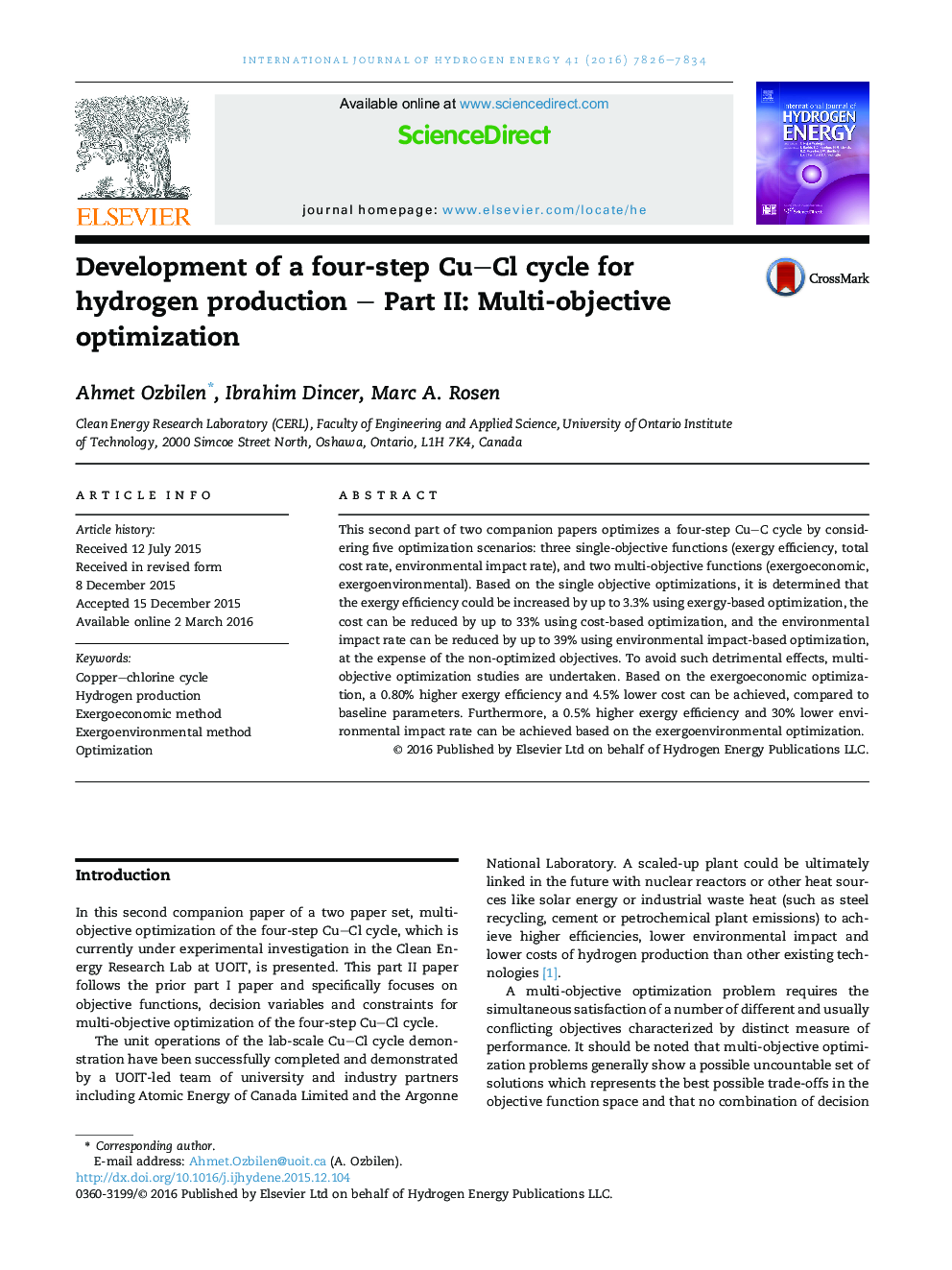| کد مقاله | کد نشریه | سال انتشار | مقاله انگلیسی | نسخه تمام متن |
|---|---|---|---|---|
| 1277276 | 1497406 | 2016 | 9 صفحه PDF | دانلود رایگان |
• An optimization of the four-step Cu–Cl cycle.
• Utilization of exergoeconomic and exergoenvironmental methods.
• Development of optimum operating conditions for hydrogen production.
• Achievement of increasing efficiency and reducing cost and environmental impact.
This second part of two companion papers optimizes a four-step Cu–C cycle by considering five optimization scenarios: three single-objective functions (exergy efficiency, total cost rate, environmental impact rate), and two multi-objective functions (exergoeconomic, exergoenvironmental). Based on the single objective optimizations, it is determined that the exergy efficiency could be increased by up to 3.3% using exergy-based optimization, the cost can be reduced by up to 33% using cost-based optimization, and the environmental impact rate can be reduced by up to 39% using environmental impact-based optimization, at the expense of the non-optimized objectives. To avoid such detrimental effects, multi-objective optimization studies are undertaken. Based on the exergoeconomic optimization, a 0.80% higher exergy efficiency and 4.5% lower cost can be achieved, compared to baseline parameters. Furthermore, a 0.5% higher exergy efficiency and 30% lower environmental impact rate can be achieved based on the exergoenvironmental optimization.
Journal: International Journal of Hydrogen Energy - Volume 41, Issue 19, 25 May 2016, Pages 7826–7834
